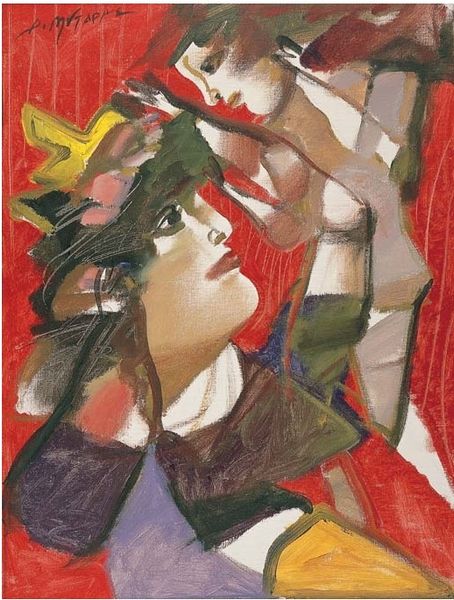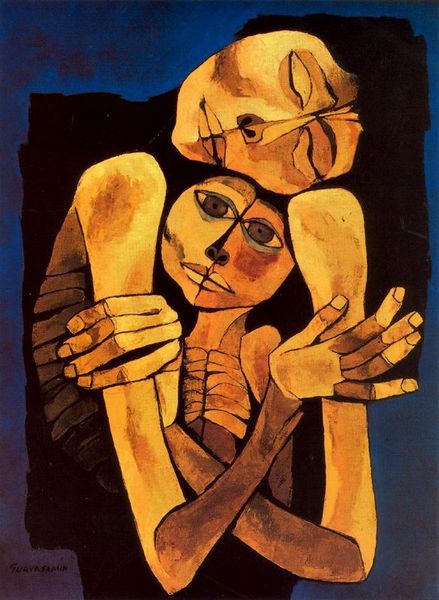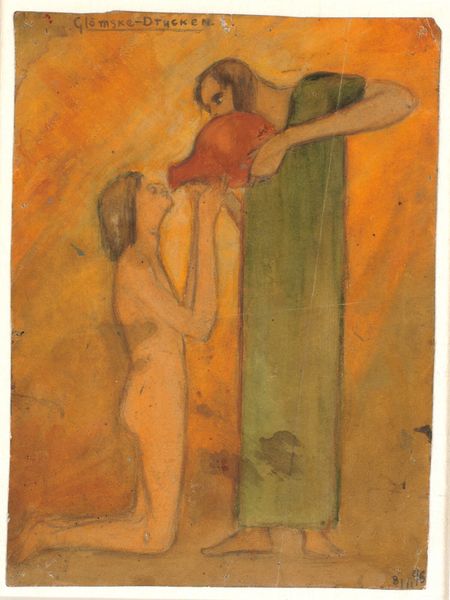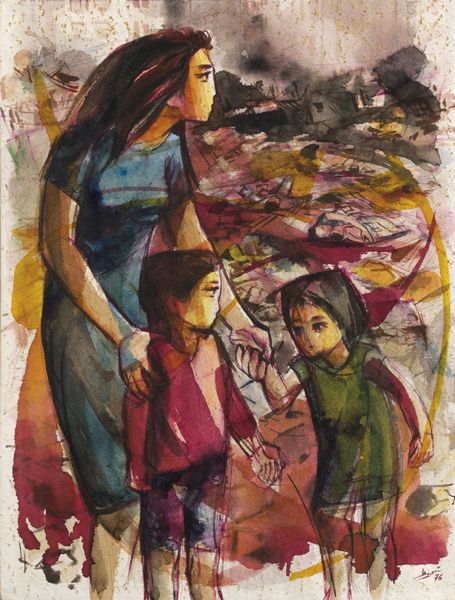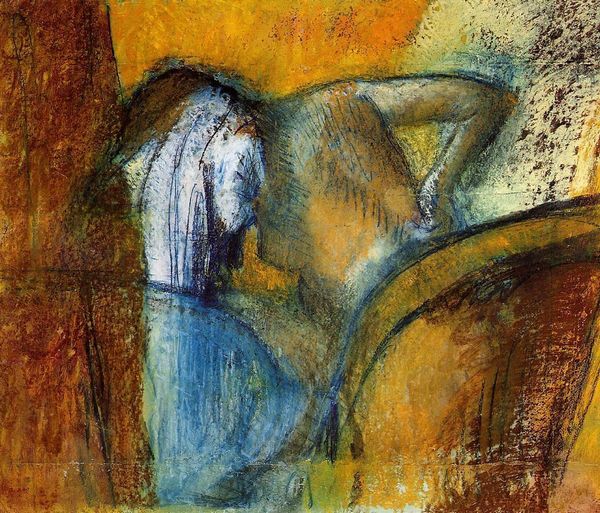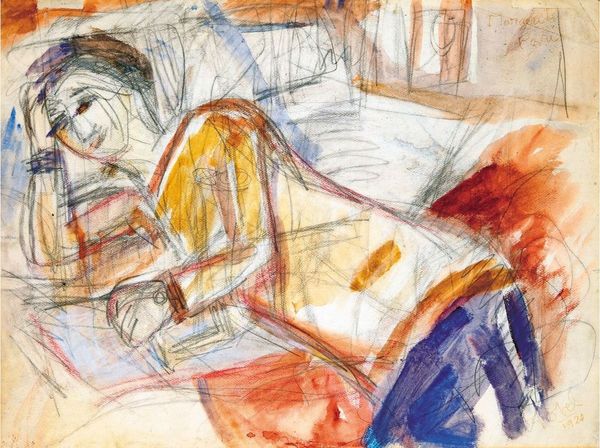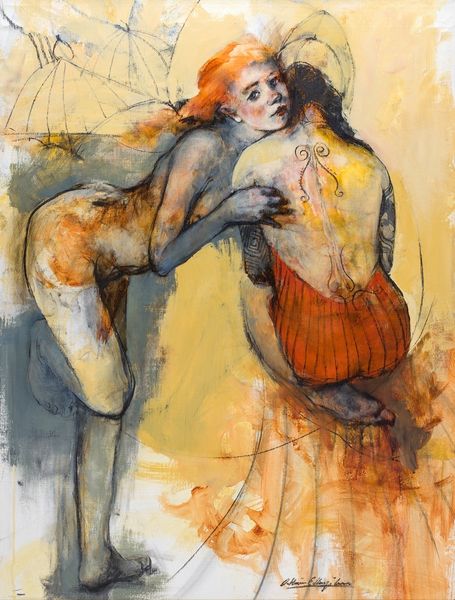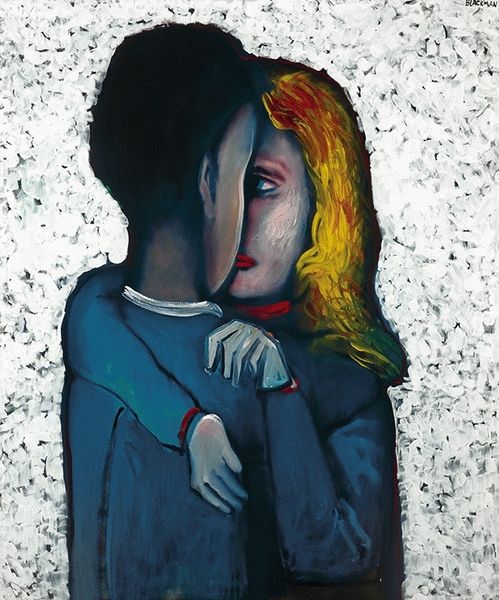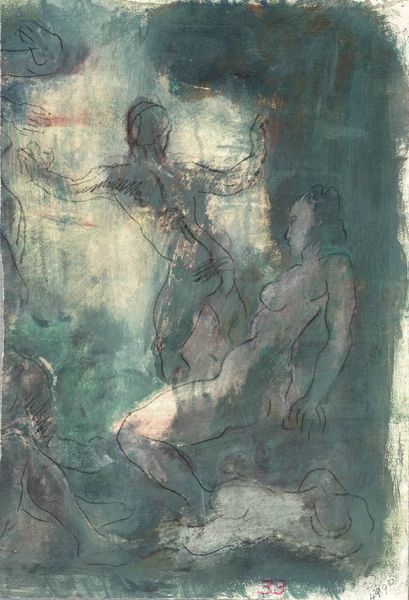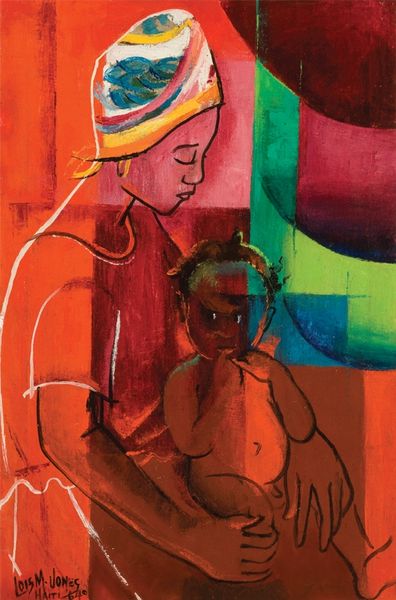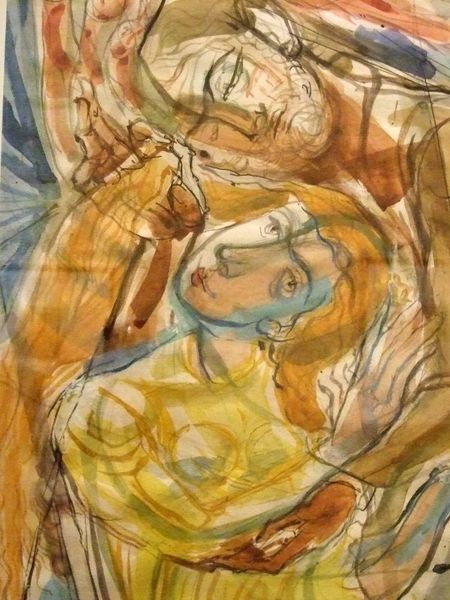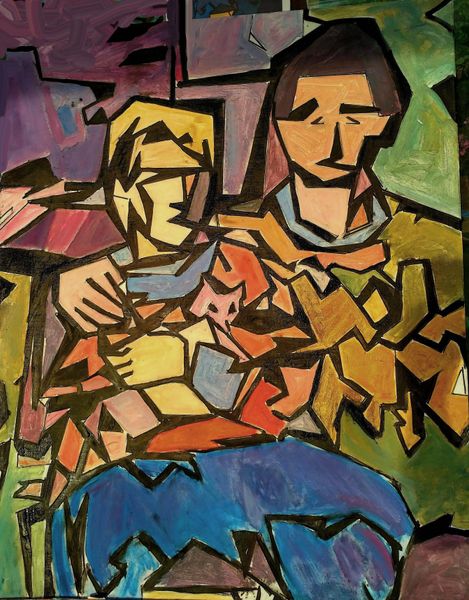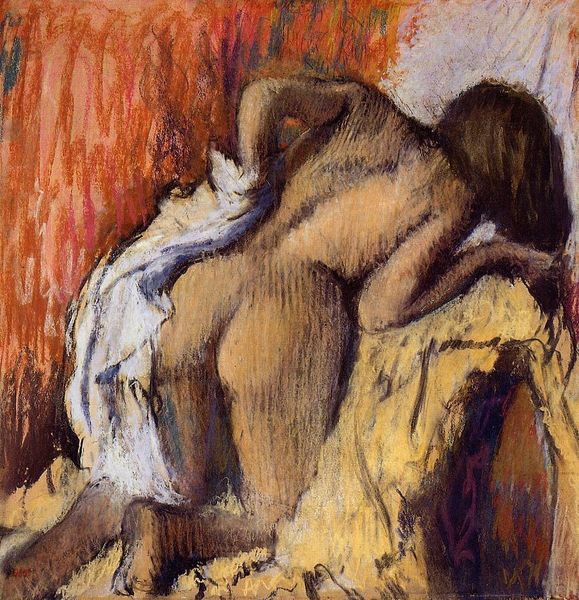
Copyright: Ismail Shammout,Fair Use
Editor: This is Ismail Shammout’s "In the Eye (from the Tall Al Zaatar Series)" from 1984. It looks like it’s done with watercolor and perhaps acrylic on canvas. The expressionistic style creates such a haunting feeling. What symbols or cultural context can you unpack from this powerful image? Curator: This image deeply resonates. Shammout uses the family portrait, an iconic representation of stability, and twists it into a potent symbol of displacement and grief. Notice how the eyes of the figures seem to look in different directions, perhaps symbolizing fractured hopes or the inability to see a clear future. Editor: That's insightful. I see the figures at the bottom too. Is it symbolic of loss? Curator: Yes, precisely. The bodies lying prone at the base of the composition serve as a stark reminder of casualties and shattered innocence, likely referencing the horrific events at the Tall al-Za'atar refugee camp. Their positioning beneath the living family members emphasizes their vulnerability. Consider the colors used—the earthy browns and reds. What feelings do they evoke? Editor: Warmth, but also a sense of rawness, of pain. And there’s an upward gaze in the mother and the young boy...a glimpse of hope amidst tragedy? Curator: Possibly, or perhaps a plea for divine intervention, a longing for respite. The painting acts as a memory, a form of cultural preservation, making sure we never forget the human cost of conflict. Art becomes a testament. It ensures remembrance. Editor: It's incredible how Shammout uses familiar symbols to communicate such complex emotions and historical narratives. Thank you for helping me decipher this layered image! Curator: It is art that carries history and the enduring weight of the human spirit within it. Analyzing works such as these always reveals something new about cultural trauma and memory.
Comments
No comments
Be the first to comment and join the conversation on the ultimate creative platform.
